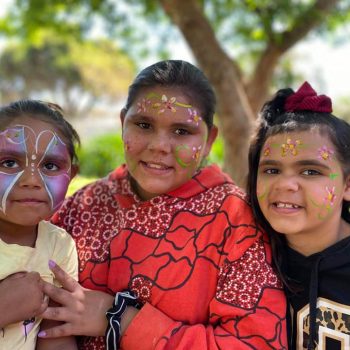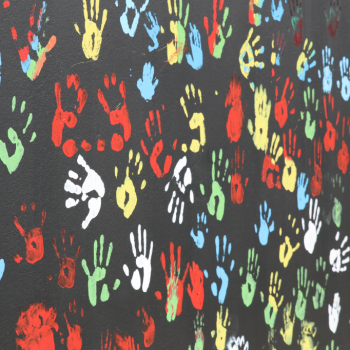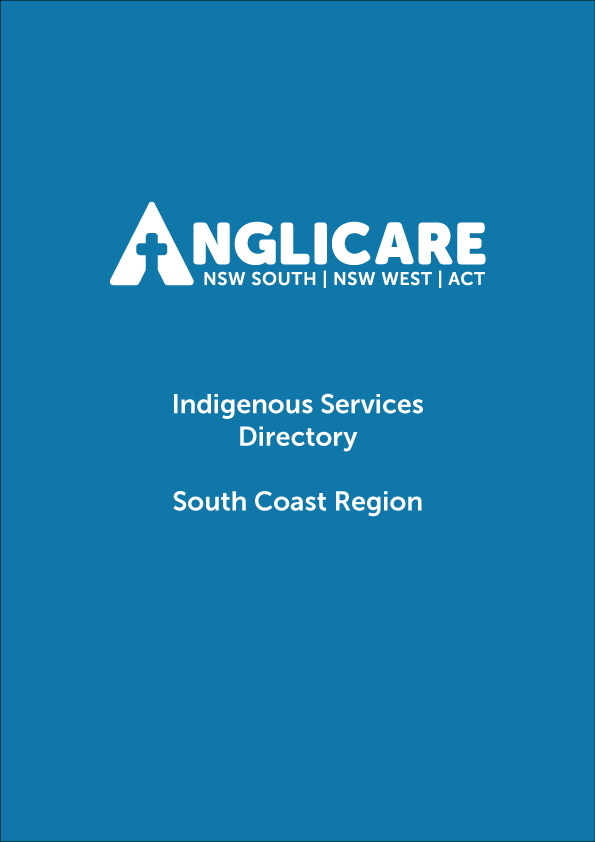
Anglicare (including St Saviours) acknowledges Aboriginal and Torres Strait Islander Australians as the First Peoples and Traditional Custodians of this land. We celebrate the living cultures, strengths and achievements of the First Nation communities in which we work, including knowledge keepers and Elders of every generation. Moreover, we value the stories of resilience and survival which make up Indigenous Australia.
Anglicare acknowledges the impact of colonisation including the role the church has played in the untold history of this land. It also recognises the inequalities experienced by Aboriginal and Torres Strait Islander people on all of the socio economic life indicators. Thus, Anglicare will work in partnership with Aboriginal people in ways that will:
- Celebrate and affirm the culture of Indigenous Australians,
- Seek justice and contribute to the wellbeing of Aboriginal and Torres Strait Islander people, and
- Be based on two-way learning and which contribute to the capacity of the families and communities it serves.
Anglicare’s new Reconciliation Action Plan is under the final stages of revision and will be released in the coming months.
Cultural Safety
Anglicare has made a commitment as an organisation to create an environment of cultural safety.
Cultural safety is “an environment that is safe for people, where there is no assault, challenge or denial of their identity, of who they are and what they need. It is about shared respect…..and truly listening” (Williams, 2012)
To achieve this, Anglicare is working toward embedding cultural safety within policies and procedures, values, vision and strategic plan. This whole organisation approach, works to affirm the identity of Aboriginal people, families and communities.
Wise Practice
Wise Practice is a framework of care developed by, and for, First Nations people. Derived from the strengths and inherent wisdom of Indigenous Australians, Wise Practices prioritises local strengths and culture. Likewise it emphasises local leadership and self-determination in the delivery of human services. Anglicare is committed to the Wise Practices framework of care in all of its work with Aboriginal and Torres Strait Islander peoples. (Reconciliation Action Plan 2019-2021).
Aboriginal Services Directory
It is a target of our Reconciliation Action Plan to develop a directory of Indigenous Services in our regions. Below are the directories for South Coast and Western NSW regions.
Staff Resources
The below resources are recommended to Anglicare staff to learn more about working with Indigenous Australians.
Wise Practices
The Art of Indigenous Incarceration (2019. Radio National)
Broken Hill Prisoners find a Voice – Cultural Connection through music and arts (2019. Radio National)
Insights into life for Indigenous Australian young people in the remote NSW town of Brewarrina (2019. ABC TV “Oneland”)
Working with Families (including OOHC)
Raman, S. Reynolds, S. & Khan, R. (2011). Addressing the Wellbeing of Aboriginal Children in OOHC: are we there yet?
Secretariat National Aboriginal and Islander Child Care (SNAICC)
NSW Child Family and Community Peak Aboriginal Corporation (Absec)
Working with Aboriginal and Torres Strait Islander people (2018)
Krakouer, J. Wise, S. & Connelly M. (2018). We Live and Breathe Through Culture: conceptualising cultural connection for Indigenous Australian children in OOHC
Long, M. & Sephton, R. (2011). Rethinking the Best Interests of the Child: voices from Aboriginal child and family welfare practitioners.
Working with Aboriginal People and Communities
Life Without Barriers – Working with Aboriginal and Torres Strait Islander People
Pascoe, B. (2018) The Little Red Yellow Black Book: an introduction to Indigenous Australia
Bennet, B. & Green, S. (2019) Our Voices: Aboriginal Social Work
Kicket-Tucker, C. Bessarab, D., Coffin, J. & Wright, M. (2016) Mia Mia Aboriginal Community Development
Supervising Aboriginal Staff
Family Finding
At the local level, speak to Local Aboriginal Land Councils, Elders Groups and/or Local Aboriginal inter-agencies or consultative groups.
Building Positive Identities in Aboriginal Young People
Aboriginal and Torres Strait Islander Children’s Cultural Needs (2015) SNAICC
A Strengths Based Approach Towards Aboriginal and Torres Strait islander Children (2017) Dept Families Housing Community Services and Indigenous Affairs
NITV programs – eg Little J and Big Cuz TV series and on-line games
NSW National Parks and Wildlife – contact Aboriginal rangers and sites officers for school holiday programs on Country
Aboriginal Astrology Apps
Approach your local Elders groups and/or inter-agencies for what is happening locally
Engaging Aboriginal and Torres Strait Islander Children and Young People Toolkit
Secretariat National Aboriginal and Islander Child Care (SNAICC)
NSW Child Family and Community Peak Aboriginal Corporation (Absec)
Language
Demonstrating Inclusive and Respectful Language (Reconciliation Australia)






